Patio Rooms vs Patio Enclosures: Designing an Outdoor Oasis
Want to escape the hubbub of the house while also keeping a certain distance between yourself and the elements (and those pesky insects)? Join the millions who are bringing the comfort and amenities of the indoors outdoors through the implementation of a patio room (aka outdoor room).
One of the bigger design considerations of a patio room is the degree to which it is enclosed. Let’s take a look at a few different approaches to creating your ideal outdoor oasis.
What’s the difference between patio rooms and patio enclosures?
The term patio room refers to any manner of fully or partially covered outdoor living spaces that are meant to be enjoyed during the warm months. They may be open from one or all sides, employing any vertical built or landscaped element to create walls (or the suggestion thereof).
As the name suggests, a patio enclosure is a type of patio room that is fully enclosed (thus sometimes referred to as an enclosed patio room), with a hinged or sliding entry door. Because patio enclosures possess proper walls and are better insulated, it’s possible to extend their use beyond summer (inspiring another alter-ego, the three-seasons room).
Patio enclosures can be constructed from any number of materials, from simple screens to insulated glass or vinyl. Here at Ayars, we have long been a proponent of the PGT Eze Breeze vinyl enclosure system.
Patio room design considerations
How you design your patio room — including whether or not you enclose it — depends ultimately on your intentions for the space, as well as what’s important to you. For instance, if you want to use it for dining and entertaining, then you’ll want to make sure it adjoins the kitchen for easy access to food and refreshments. Additionally, the space will have to be large enough to accommodate multiple guests. If you have the budget for it, you might consider installing a cooktop or wet bar outside to avoid the back and forth!
Conversely, if you are a more quiet, private person, you might nestle a detached patio room into a garden or more secluded area of your property and relish your surroundings (and perhaps a good book) with more exclusive company. Regardless of how you spend your time (and how much of it) in your covered outdoor living space, bear in mind that the International Residential Code (IRC) proscribes use as a habitable room — which changes it by definition to an addition, subject to different regulations and taxes.
For more food for thought, read up on our do’s and don’ts of outdoor living spaces.
Patio rooms top to bottom
Roofing
An enclosed patio room typically requires a full roof or roof extension, with the requisite framing and shingling. The three most popular types of roofs for patio enclosures are gable (open-faced triangular with two sides sloping out from a centerline), hipped (a closed-face triangular roof that has three or more sides sloping down from a common point), and shed (rectangular, downward sloping). Homeowners can get creative by incorporating glass ceilings or skylights for a more modern or greenhouse flavor.
For an unenclosed patio room, the playbook (like the space itself) is much more open. Cloth canopies, retractable roller shades, pergola structures, or any combination thereof are among the most popular roofing solutions. You might even try a green (living) roof to truly camouflage your space with the backyard, or employ ivy or some other species of creeping vine to fill in the gaps of a partial roof.
Walls and windows
Whatever you choose to play the role of “wall” in your outdoor patio room will have a tremendous influence on the privacy, ventability, and overall seasonality of the space. As we mentioned earlier, a patio room technically only requires the suggestion of walls to define its boundaries. Drapes, curtains, hedges, shrubs, pavers, fences, and/or latticework might all serve this function.
A patio enclosure demands framing (aluminum, fiberglass, wood) to hold screens and/or windows in place. The simplest enclosures will only include window screens, which will filter out the bugs, but not the weather. Glass windows and/or window walls offer the maximum insulation and UV filtration capabilities, but depending on the size of the enclosure, can represent a significant expense.
The Eze Breeze enclosure system’s vinyl-glazed panels represent an excellent compromise, with great flexibility in design. They can be configured either horizontally or vertically to fit any opening size, with a variety of venting options to effectively mimic the function of glass windows. A broad palette of tinting and color options makes it easier to adjust for privacy and aesthetics. The panels also pop out for stress-free cleaning and maintenance.
Flooring
Last but not least, we need to decide what we’re going to set our feet on. As with the other facets of our patio room, there is a wealth of options out there, from concrete, bricks, and pavers to more luxurious flagstone and ceramic tile flooring. Engineered materials (e..g vinyl plank flooring) and wood-look tiles can convincingly emulate other patterns and textures with savings in cost. Wood decking still has its advocates, but it does not weather seasonal changes well without consistent maintenance.
Patio room examples
Exterior home improvements are one of the pillars Ayars is built on, and to this day we take pride in designing and constructing beautiful outdoor living spaces for our clients, whether they be decks, porches, or patio enclosures. Here are a couple of examples from our portfolio to demonstrate how both an open and enclosed patio room can beautifully come to life.
Fully enclosed outdoor living room
This outdoor living room is a prime example of the PGT Eze Breeze vinyl porch enclosure system in practice. Like a classic indoor living room, the central feature is a fully operational fireplace, backed with Evolve Stone lightweight stone veneers and a custom-miter folded mantle fashioned from wire-brushed hemlock.
Open outdoor living room
This outdoor living room in Clarksboro, NJ comprises just one part of a bona fide outdoor entertaining complex, connecting to a more traditional deck, grilling and fire pit area, and in-ground pool. Attractively furnished and ringed with fairy lights, it also includes a ceiling-mounted television for watching the season’s hottest sporting events or just winding down after dinner with the family.
Bring the indoors outdoors with Ayars
Are you itching to bring the indoors outdoors? The Ayars team is booked for Summer 2022, but would love to plan ahead for the seasons to come.

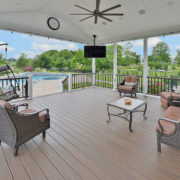
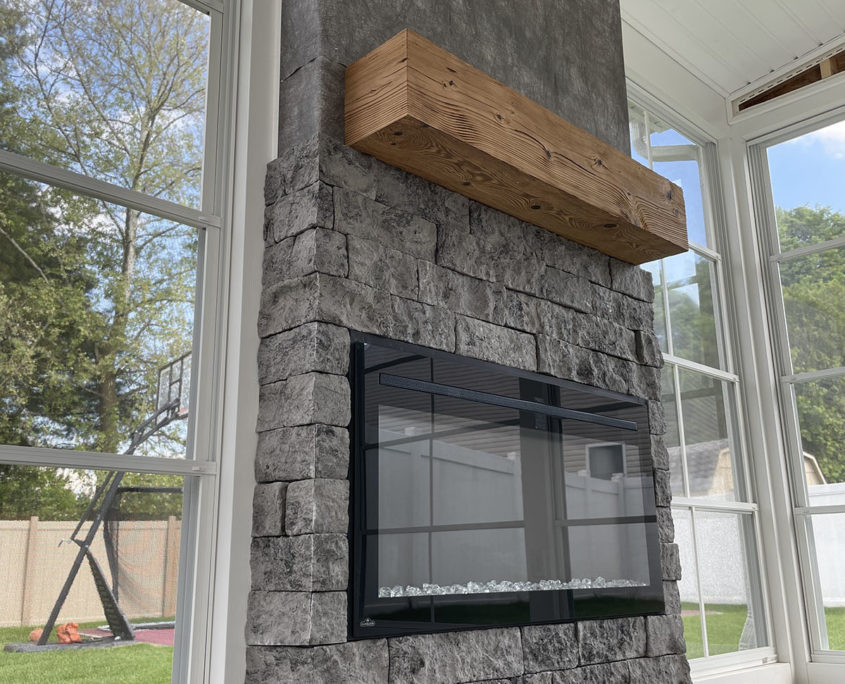
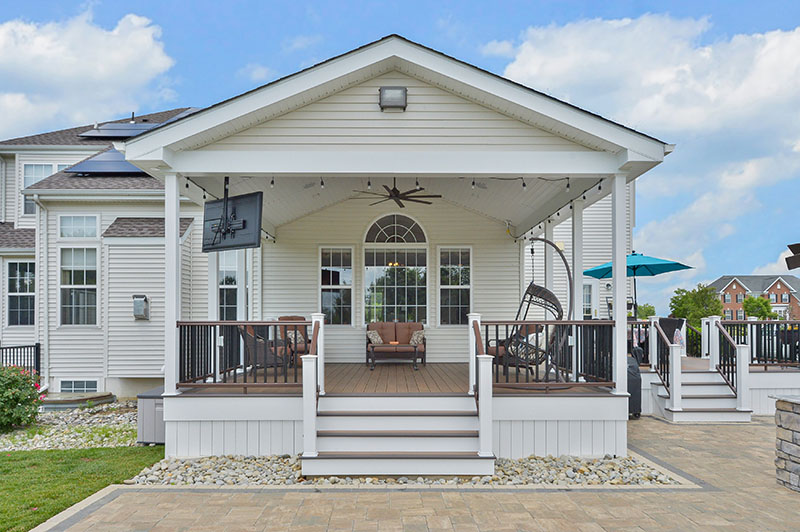
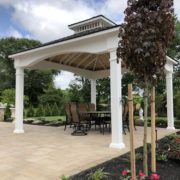
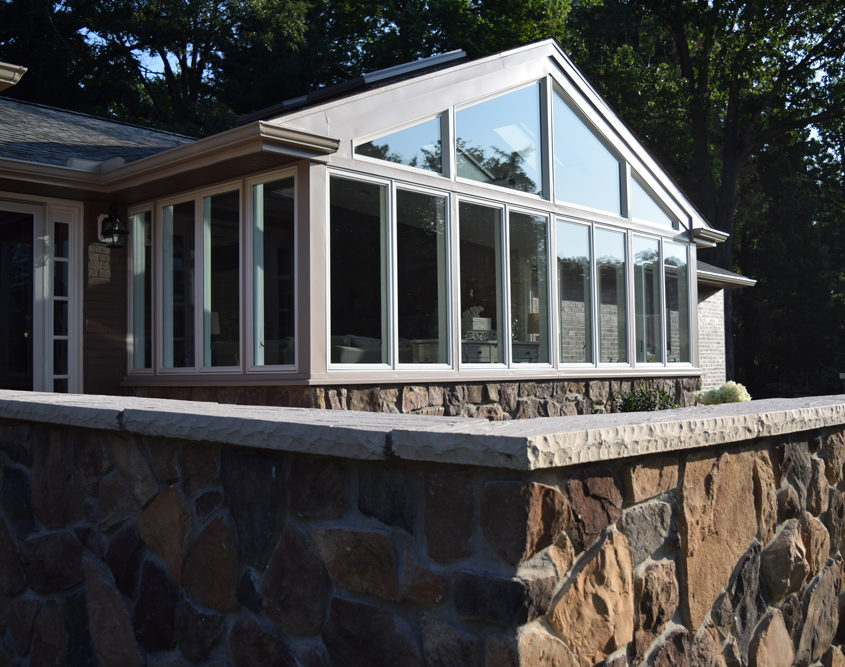
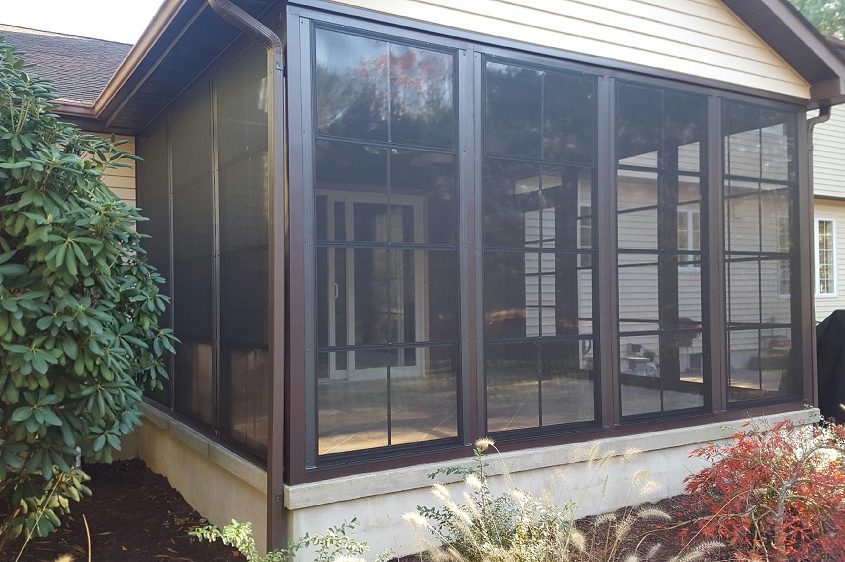
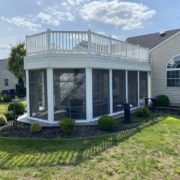
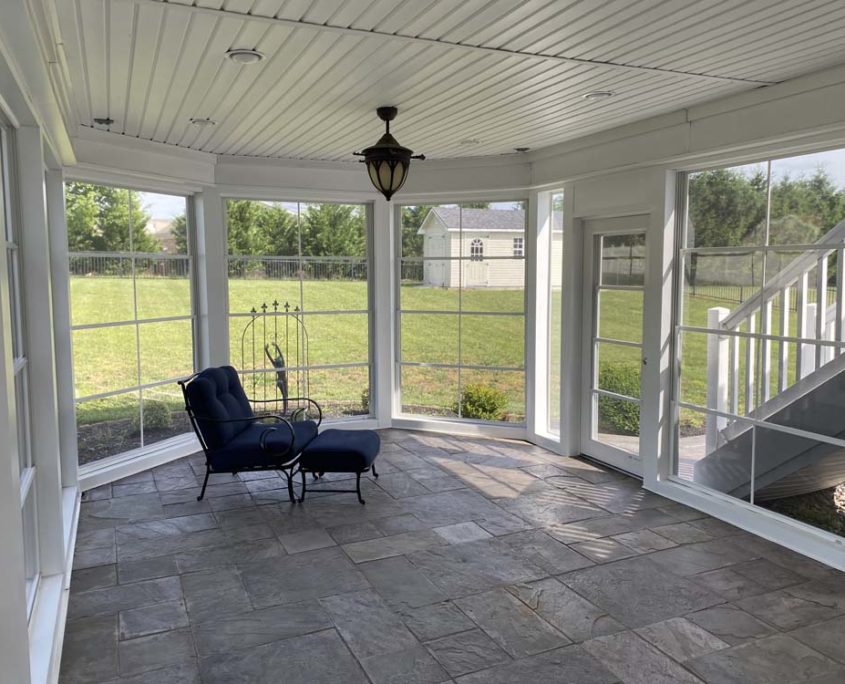
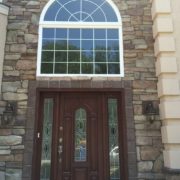
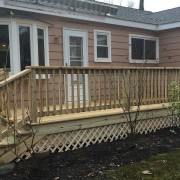
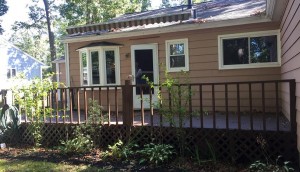 Many older decks aren’t adequately bolted to the house, and many more are poorly flashed to keep out water. While it’s easy enough to add more bolts to the deck ledger, it’s nearly impossible to be sure that the original flashing was done correctly and that there’s no rot due to bad flashing.
Many older decks aren’t adequately bolted to the house, and many more are poorly flashed to keep out water. While it’s easy enough to add more bolts to the deck ledger, it’s nearly impossible to be sure that the original flashing was done correctly and that there’s no rot due to bad flashing. The only sensible thing to do here was to remove the old frame completely. I mean, at that point it makes the most sense to replace the framing because even treated lumber has a finite lifespan. Why would you install new decking and railing on an old frame that might not outlast them?
The only sensible thing to do here was to remove the old frame completely. I mean, at that point it makes the most sense to replace the framing because even treated lumber has a finite lifespan. Why would you install new decking and railing on an old frame that might not outlast them?
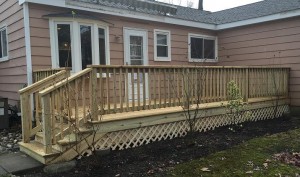
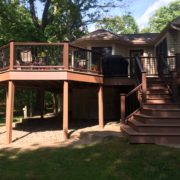
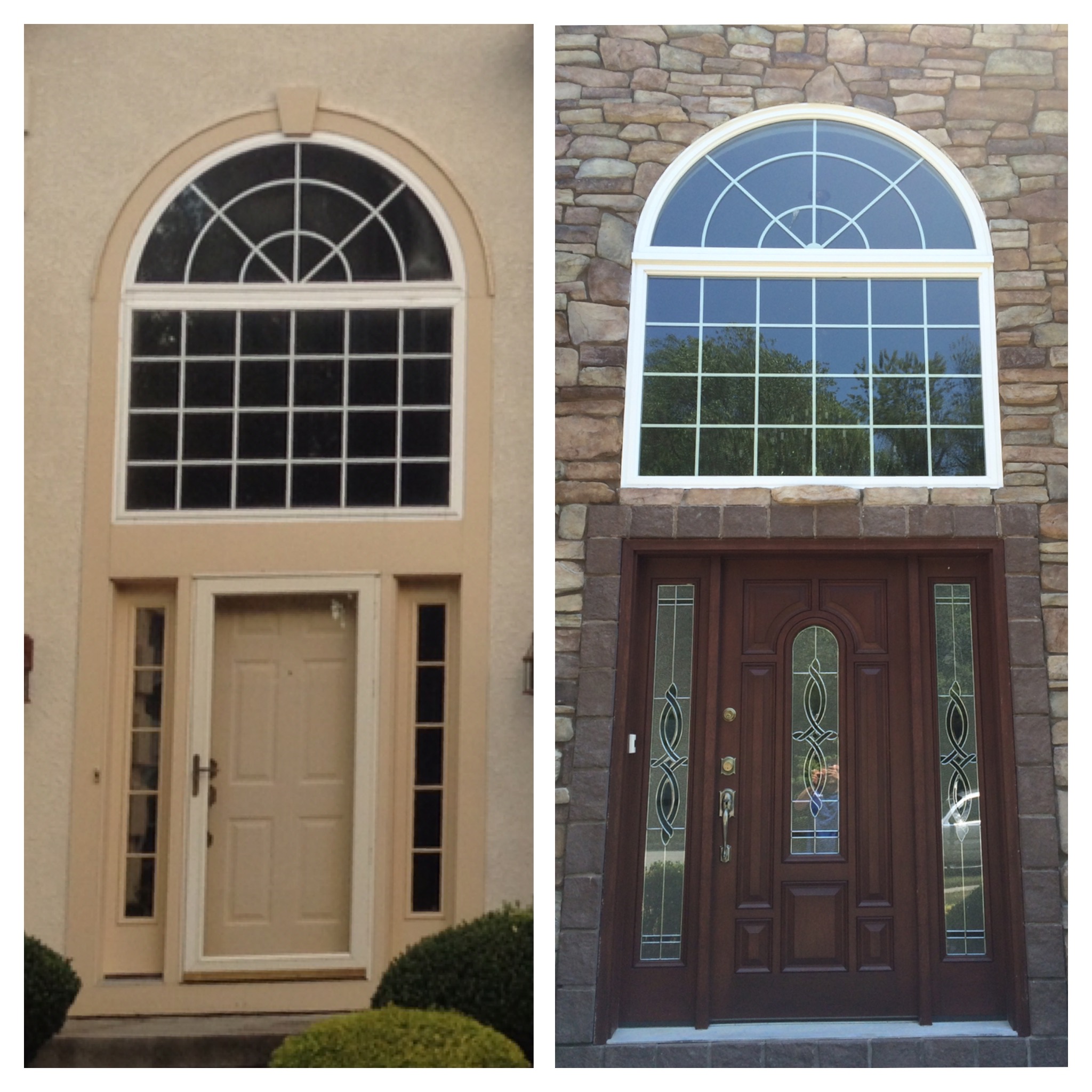
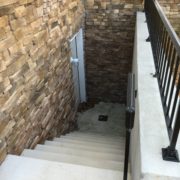
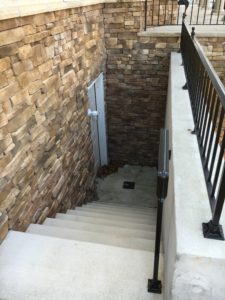
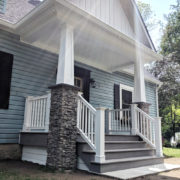
 In this diagram, an additional beam is shown to depict situations where the joist span is too long for the length of the joist. In those cases, installing additional beams adds stability to your porch. No matter which structure you choose, space your joists 16 inches on center (o.c.). Measure from the center point of one joist to the center of the next.
In this diagram, an additional beam is shown to depict situations where the joist span is too long for the length of the joist. In those cases, installing additional beams adds stability to your porch. No matter which structure you choose, space your joists 16 inches on center (o.c.). Measure from the center point of one joist to the center of the next.